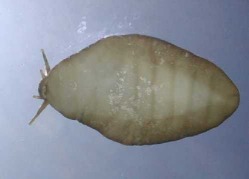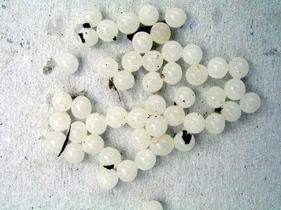An introduction to Giant African Land Snails

Giant African Land Snails, often referred to as GALS, are native to Africa, where they are predominantly found south of the Sahara. When fed on the correct diet and kept in appropriate conditions, the shell of a GALS can grow up to 12 inches long. However, most pet snails reach between 5-7 inches in length.
GALS internal organs are positioned inside of their shell and their body is a strong muscle that facilitates movement through contractions. If you watch your snail crawl up the wall of his tank, you will be able to see these contractions ripple through his body.
GALS do not have teeth, instead they have flat cartilaginous plates, called radula, with which they grind off chunks food. The radula has 140 rows, each containing 129 tooth-like projections.
GALS are an extremely successful species - they breed rapidly and tolerate fairly extreme conditions. Along with their voracious appetites, these aspects of their biology mean that populations of GALS can pose a significant threat to both crops and native wildlife. As such, it is illegal to release GALS into the wild in the UK, while in many other countries it is illegal to even keep them as pets.

GALS are hermaphrodites, meaning that they possess
both male and female reproductive organs. As two GALS are able to fertilise each other, a mating can result in up to 500 eggs being laid by each snail.
The behaviour of your snails may change when they are gravid (carrying eggs) and you may see your snail burrow down in to their substrate prior to laying.
We recommend that owners thoroughly check their tank for eggs at least once every three days. Remove the snails and any accessories from the tank and check through the soil inch by inch. Once you have retrieved any eggs, put them in a secure tub and place them in the freezer for 48 hours. After 48 hours, they can be thrown away. The eggs must be disposed of responsibly; simply throwing them away is illegal.
There are a huge number of unwanted snails looking for good homes and so we do not advise breeding them intentionally. Each month we are asked to take in up to 2,000 individual snails, a number mostly made up by missed eggs that have hatched. When you think that all these snails and many more are all in need of homes, you can see that breeding is irresponsible and the need to regularly check for, and correctly dispose of, eggs is absolutely essential.
If you do miss any eggs and they subsequently hatch, any young must then be carefully moved into a secure tank (ideally a small plastic aquarium with a secure, ventilated lid), away from the adult snails, who could easily crush them. Young snails are too small to handle and instead they should be left to crawl on to a leaf which can then be moved into a suitable sized tank. Water bowls should not be provided for young snails, as they can easily drown.
Snails can continue to lay eggs for up to several years after a single mating. Single adult snails may continue to produce viable eggs if they have previously been kept with a mate.
both male and female reproductive organs. As two GALS are able to fertilise each other, a mating can result in up to 500 eggs being laid by each snail.
The behaviour of your snails may change when they are gravid (carrying eggs) and you may see your snail burrow down in to their substrate prior to laying.
We recommend that owners thoroughly check their tank for eggs at least once every three days. Remove the snails and any accessories from the tank and check through the soil inch by inch. Once you have retrieved any eggs, put them in a secure tub and place them in the freezer for 48 hours. After 48 hours, they can be thrown away. The eggs must be disposed of responsibly; simply throwing them away is illegal.
There are a huge number of unwanted snails looking for good homes and so we do not advise breeding them intentionally. Each month we are asked to take in up to 2,000 individual snails, a number mostly made up by missed eggs that have hatched. When you think that all these snails and many more are all in need of homes, you can see that breeding is irresponsible and the need to regularly check for, and correctly dispose of, eggs is absolutely essential.
If you do miss any eggs and they subsequently hatch, any young must then be carefully moved into a secure tank (ideally a small plastic aquarium with a secure, ventilated lid), away from the adult snails, who could easily crush them. Young snails are too small to handle and instead they should be left to crawl on to a leaf which can then be moved into a suitable sized tank. Water bowls should not be provided for young snails, as they can easily drown.
Snails can continue to lay eggs for up to several years after a single mating. Single adult snails may continue to produce viable eggs if they have previously been kept with a mate.

